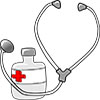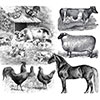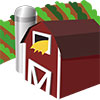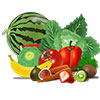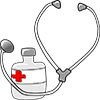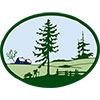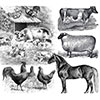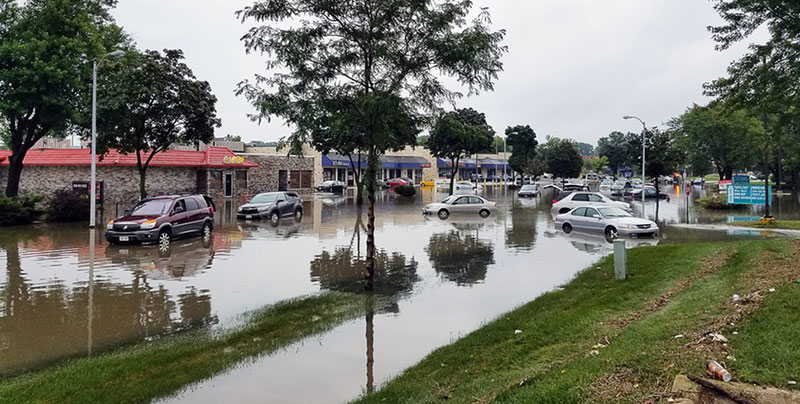
The most up-to-date flood-related resources, from CSU Extension and our partnering agencies.
Floods can destroy homes and cause injuries or death to people, animals and the environment. Click on the Prepare or Respond tabs to view resources by topic.
Plan
Crops/Farm Managment
- Prepare for Flooding in Rural Areas
- Preparing to Evacuate Your Farm
- Planning Ahead: Portable Generator Safety
- Standby Electric Generators
- Sandbagging
Family/Home
- Before the Flood
- Build a Kit
- Disaster Handbook
- Disaster Preparedness for Seniors by Seniors
- Emergency Preparedness for Kids
- Emergency Preparedness Starts at Home
- Farm and Ranch Family Stress and Depression: A Checklist and Guide for Making Referrals
- Insurance for Colorado Consumers
- Operation Emergency Prepare
- Plan Ahead for Disasters
- Produce Crops and Home Gardens after Flooding
Food/Water
- Drinking Water Resources
- Emergency Water Supplies and Treatment
- Food Safety and Storage for Emergency Preparedness
- If Your Freezer Stops
- Three-Day Emergency Supply of Shelf-Stable Food for One Person
- Water Storage
Health/Medical
- Colorado flood health hazards: How to avoid them
- What Can Chronically Ill Patients Do to Brace for Natural Disasters?
Landscape
Livestock
- Caring for Livestock Before Disaster
- Disaster Handbook
- Equine Boarding Stable Contracts
- Feeding Flood-Damaged or Sprouted Crops to Livestock
- Livestock and Floods Don’t Mix
- Make Plans to Move Livestock, Hay Now
Pets
Other State/National Resources
Respond
Crops/Farm Management
- Bacteria in Water Wells
- Cleaning Flooded Wells
- Chlorinating a Well and Water System
- Cleanup of Oil and Fuel Spills in Agricultural Buildings Associated with Flooding
- Flooded Farm Vehicles and Equipment
- Frequently Asked Questions
- Flooded Farms and Gardens
- Flooded Pesticides
- Flooded Wells Need to be Cleaned
- Flood Recovery Checklist
- Flood Response Plan
- Food Safety for Flooded Farms
- Information Concerning Produce Crops and Home Gardens after Flooding
- Local Road Assessment & Improvement Drainage Manual
- Pesticide Storage Concerns During a Flood
- Produce Safety and Flooded Fields
- Salvaging Crops After Flooding
- Salvaging Stored Wet Feed and Grain
- Soil Testing Following Flooding, Overland Flow of Waste Waters and other Freshwater Related Disasters
- Tips for Handling Flooded Soils
- Weed Management After a Flood
Family/Home
- After the Flood
- Communicating After a Disaster
- Coping with Natural Disasters
- During the Flood
- Emergency Water Supplies and Treatment
- Keep Children Safe During Flood Recovery
- First Steps to Flood Recovery
- Frequently Asked Questions
- Handwashing for Emergencies
- How to Recover After a Disaster
- Mold and Drinking Water
- Pest Problems after Storms
- Recovery After Disaster: The Family Financial Toolkit
- Replacing Important Papers
- Resources for Your Flooded Home
- Rodents, Snakes and Insects
- Watch for Snakes Displaced by Flood Waters
Food/Water
- Bacteria in Water Wells
- Cleaning Flooded Wells
- Chlorinating a Well and Water System
- Domestic Water Quality Criteria
- Flooded Wells Need to be Cleaned
- Home Food Safety Information after a Flood
- If Your Freezer Stops
Health/Medical
Landscape
- Care of Flood-Damaged Lawns and Turf
- Flooded Farms and Gardens
- Flooding Effects on Trees
- Soil Testing Following Flooding, Overland Flow of Waste Waters and other Freshwater Related Disasters
- Understanding the Effects on Flooding on Trees
Livestock
- Animal Carcass Disposal Options
- Caring for Livestock After Disaster
- Caring for Livestock During Disaster
- Colorado Horsecare Foodbank (Flood Emergency Hay Hotline)
- Disaster Handbook
- Livestock Indemnity Program Provides Payment For Livestock Losses
- Post Flood Equine Health Facts
- Protecting Livestock During a Flood
- Resources to Recovery





